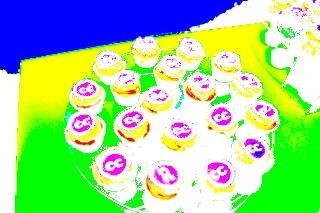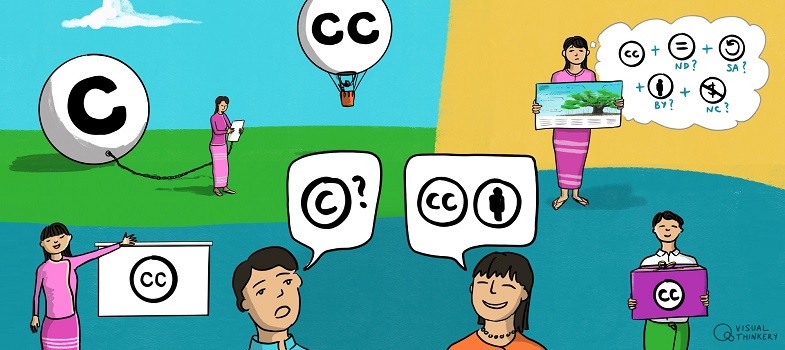Indicating if your work is based on someone else’s work
The second case is indicating if your work is based on someone else’s work. If your work is a modification or derivative of another work, indicate this and provide attribution to the creator of the original work. You should also include a link to the work you modified and indicate what licence applies to that work.
For example, you might want to make a minor change to the picture above. In the instance below, the photo has been desaturated:

A good attribution for this modified version would be:
Creative Commons 10th Birthday Celebration San Francisco by tvol used under CC BY 2.0/desaturated from original.
The attribution includes the title, author, source and licence for the original photo, and also indicates how the original photo has been modified.
For other instances where you have made minor changes to a resource, you could also use a statement such as the following:
Adapted from Creative Commons 10th Birthday Celebration San Francisco by tvol used under CC BY 2.0.
Sometimes you may want to make more substantial changes to a resource. In these instances, you may have created a derivative work. Let’s look at this example, where a new work (called ‘90fied’) has been created, using the image above:

The attribution statement for this new work should include both TASL details for the new work, ‘90fied’ and details of the original photo ‘Creative Commons 10th Birthday Celebration San Francisco’. A good attribution could be:
This work ‘90fied’ is a derivative of Creative Commons 10th Birthday Celebration San Francisco by tvol used under CC BY 2.0. ‘90fied’ is licensed under [licence type] by [your name].
‘Creative Commons 10th Birthday Celebration San Francisco’ is licensed CC BY 2.0. Once you begin to create derivative works, you need to pay attention to how you license your new creations. We will take a closer look at derivatives and what licences could be applied to the work ‘90fied’ in Section 5.3.
Marking your own work
